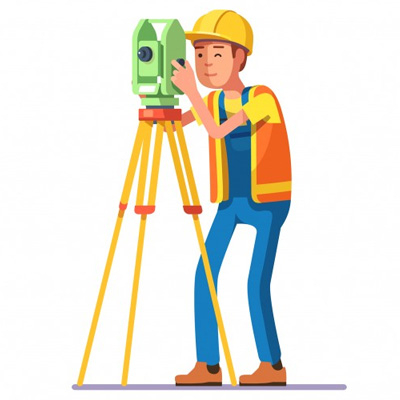When it comes to choosing a survey tripod, stability and durability are of the utmost importance to ensure consistent and accurate readings.
Additionally, qualities such as weight, portability, and height must also be considered.
Keep reading to learn about the top 6 considerations when choosing a surveyor tripod and to see our recommendations in each category.

The one thing you can count on when it comes to land surveying is that the conditions are unpredictable. Whether you are working on rough terrain or withstanding severe weather, the job needs to be completed; you need equipment durable enough to handle whatever field conditions you might encounter.
Choosing the right material is extremely important for durability.
Surveying tripods typically come in three primary materials: wood, aluminum, and fiberglass. Wood is an affordable option and it offers decent stability, plus it isn't affected by temperature changes. Aluminum is lightweight and affordable, making it a great choice for jobs that require changing setups. Fiberglass is strong, long-lasting, and resistant to the elements.
Recommended Products in this Category:
While durability may be the most important factor when considering land survey tripods, stability is also critical. Land surveyors encounter all kinds of terrain and it isn't always flat or level. This makes stability another important factor to consider in a tripod. Stability is particularly important when working indoors on concrete or other hard surfaces to prevent the legs from spreading apart.
Recommended Products in this Category:
Most land surveying jobs require multiple setups and site changes. As such, it is important to consider the weight of any survey tools you use because will be carrying them around all day.
One of the best materials for lightweight surveying tripods is aluminum. As an added bonus, aluminum is not affected by humidity, though it may slightly expand and contract with temperature changes. Even so, aluminum tripods are ideal for most site setups that last for an hour or less.
Recommended Products in this Category:

Land surveyors in the field often do not have the luxury of staying in one place all day. Portability is key, and when it comes to portability in land survey tripods, there are several things to think about. First and foremost, the tripod needs to be made from lightweight yet durable materials. Generally speaking, aluminum is the best material for lightweight tripods, though some composite tripods fit the bill as well. You should also think about the size of the tripod and how compactly it folds down.
Recommended Products in this Category:
While most land surveying jobs can be completed with a standard tripod, there will be times when you simply need a little more length. When it comes to choosing a tripod based on height, you need to find the right combination of features.
Telescoping legs are great for added height, but you still want to make sure the tripod is sturdy without being too heavy. Having dual clamps on each leg helps ensure stability while also enabling you to adjust the tripod as needed. You may also need to consider added safety features when using an extended-length surveying tripod.
Recommended Products in this Category:
Things like durability and portability are the most important things to consider when shopping for land survey tripods, but cost is an important factor, too. You need to walk the line between choosing a surveying tripod that will withstand some rough conditions and buying a top-of-the-line model. When it comes to price, aluminum tripods are a great choice because they are inexpensive, lightweight, and long-lasting. They are particularly beneficial for leveling applications.
Recommended Products in this Category:
With so many options available, it can be difficult to choose the perfect land surveying tripod. In the end, you must decide which factors are the most important to you and select the one that delivers on those things without breaking your budget.